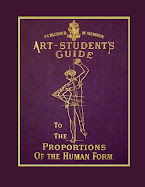This print from The London Art Journal is for sale on Ebay. Compare it to the original sculpture by John Gibson. Here is a link to the Tate Gallery website.
From the Catalogue of the British School of Pictures and Sculpture in the Naitonal Gallery British Art, The Tate Gallery, 1907:
Gibson (John), R.A. B. 1790. D. 1866. John Gibson was born at Gyffen, near Conway, and was the son of a market gardener. When he was nine years of age his father and mother removed to Liverpool, where a stationer named Tourneau lent the young artist drawings and casts to copy. At the age of fourteen he was bound apprentice to Messrs. Southwell and Wilson to learn cabinet-making. After a year he was moved into the wood-carving department, and was much employed in that art. In 1816 he exhibited at the Royal Academy two portrait busts, one of H. Parkes, and a " Psyche borne on the Wings of Zephyrus." The last work he did in Liverpool before he left for London in 1817 was a mantel-piece for Sir John Gladstone, the father of William Ewart Gladstone. He dreamed a dream that a great eagle carried him away to Bome, so he forthwith set out and arrived in the Eternal City on the 20th of October in the year 1817. He was welcomed by Canova in a generous manner. Daring his first residence in Rome he carved the " Mars and Cupid," now at Chatsworth, a " Psyche and Zephyrus," for Sir Qeorge Beaumont, a bas-relief of "Hero and Leander" for the Duke of Devonshire, the " Hunter and Dog" for Henry Sandbach, and " Hylas and the Nymphs," now in this gallery. In the year 1833 he was elected an Associate of the Royal Academy of Arts, and a full Academician in the year 1838. During 1844 he was in London, but he returned to Rome and remained there during all the troublous times of 1847 to 1849. When the French came to Rome he removed to Lucca. In 1850 he came back to London to model the statue of Her Majesty the Queen, with the figures of Justice and Clemency, for the Princes' Chamber in the Houses of Parliament. He took five years to complete for Mr. Preston the celebrated statue of Venus, known as " The Tinted Venus," and would not part with it for four years more after that. It was a replica of the uncoloured statue carved for John Neild after the artist's sojourn in Lucca. " The Tinted Venus" was exhibited at the International Exhibition of 1862, and was much discussed and admired. John Gibson died in Rome on the 27th day of January, 1866, aged 76 years. With the exception of a few small legacies, he left his whole fortune and the contents of his studio to the Royal Academy, and there may be seen a gallery full of his casts and some few works in marble.
No. 1746. Hylas and the Water-Nymphs.
The Argonauts landed on the Asiatic Coast to take on board a supply of fresh water, and the boy Hylas with his companions went to the fountain with a pitcher to draw water. The water nymphs, enamoured of the beautiful youth, carried him away.
This group was carved in marble at Rome for Mr. Hyland in the year 1826 ; subsequently it was transferred to the collection of Mr. Robert Vernon, who left it to the nation. Inscribed, I GIBSON FECIT ROME.
Marble, 5 ft. 3 in. h., including: the marble base, whioh is of irregular shape, 3 ft. 9 in. I. by 2 ft. 3 in. w.
Vernon Collection, 1847.


















No comments:
Post a Comment